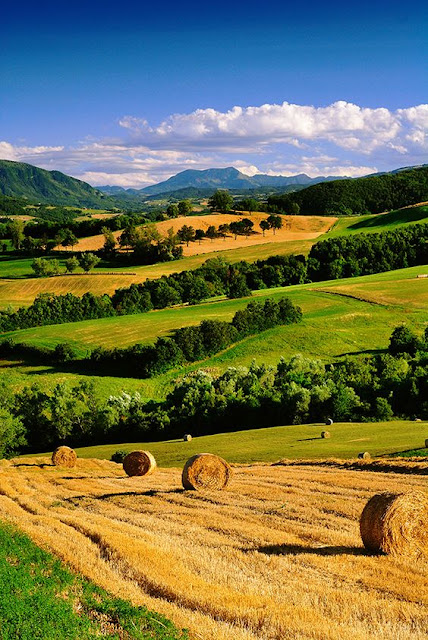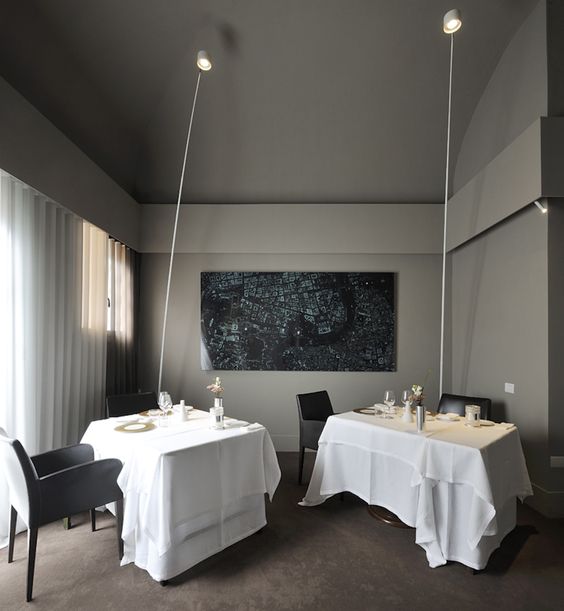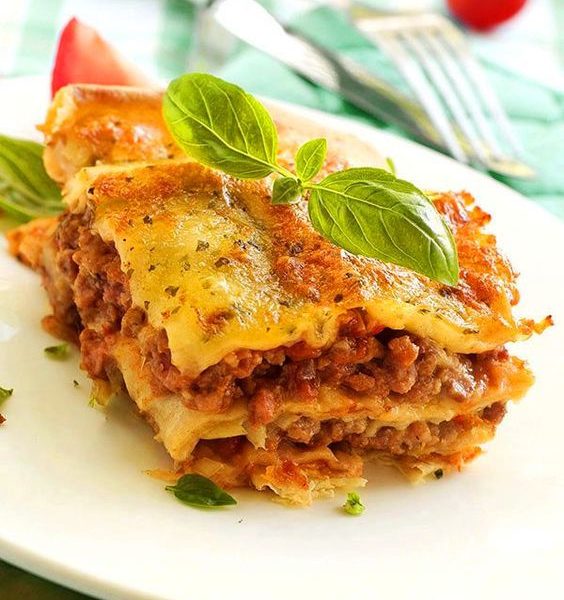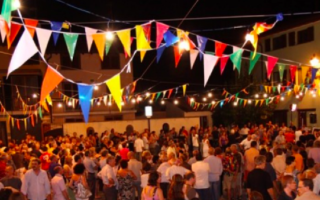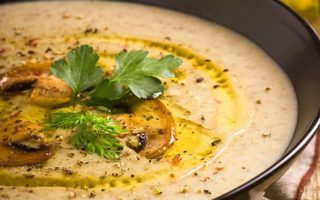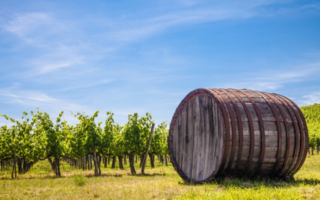The Foodie’s Guide to Bologna: Italy’s Culinary Capital
Let’s say I mention Bologna, or rather its adjective—one of its people: the Bolognese. What’s the first thing that comes to mind? If you’re anything like me (and I imagine almost everyone else on the planet) I’d imagine it’s a certain world famous culinary creation. Which we tend to serve up with spaghetti.
Each region, city, and sometimes even town in Italy makes its own contribution to our international cuisine. We have Naples to thank for the humble pizza, Florence for the mighty Bistecca alla Fiorentina, and Rome for its captivatingly delicious yet simple cacio e pepe.
But Bologna brings us far more than just its famous Bolognese—beloved, prepared (and many Italians would say botched) the world over. From Bologna originate some of Italy’s richest, meatiest dishes, the most delicious cuts of meat (like mortadella), wintery warming tortellini in brodo, and even those internationally loved layered sheets of pasta we like to call lasagne.
Much more than the ragù alla Bolognese cements the city’s position as the country’s culinary capital and recommends Bologna as a top foodie destination. And even better than the impressive list of culinary delights is that most tourists have yet to discover the city that produces them. That’s why we at Roman Candle Tours have written this guide, to help you make the most out of your trip to this unsung gastronomic giant.
Bologna and Emilia Romagna
Bologna is the regional capital of seldom-visited Emilia Romagna. It’s a green and pleasant land tucked up in the northeast of the country. On its borders are the rolling hills of lush Tuscany to the south, the coastal region of Liguria, home of Cinque Terre to the west, Veneto and its regional capital Venice to the north, and the Adriatic Sea to the east.
Emilia Romagna has produced some prestigious cultural exports. To the literary world it has given Umberto Eco, to the musical world Luciano Pavarotti. The tenor extraordinaire hailed specifically from the small town of Modena, which is now home to the second best restaurant in the world, Osteria Francescana.
With its three Michelin stars and lengthy waiting period, saying it surpasses your usual fare of pizza, pasta, and gelato would be something of an understatement. But as far as food is concerned, Modena is a remarkably understated town, especially considering it’s also the birthplace of another current culinary craze: balsamic vinegar.
Made from succulent white Trebbiano grapes, which are boiled down and aged under rigidly restricted conditions for anywhere up to 100 years, balsamic vinegar is the real deal of delicious condiments. And just as EU legislation ensures that a real Cornish pasty can only be made in Cornwall, the fact it’s DOP Protected (Denominazione di Origine Protetta) means balsamic vinegar can only be produced in Modena (though fortunately both can be exported out!).
Bologna: La Dotta, La Rossa, La Grassa
While Venice is hailed as the Queen of the Adriatic and Rome is known as the Eternal City, Bologna has three nicknames, each of which capture a main aspect of its culture perfectly. The first, La Dotta (“the learned one”), refers to the centrality of the University of Bologna—the oldest university in the West—in Bologna’s everyday life and alludes to the city’s consequently refined culture.
Bologna’s second nickname, La Rossa (“the Red”), refers not to the city’s left-leaning politics (which made it the victim of a politically-motivated attack as recently as 1980), but to the exceptional concentration of high-end automobiles in the city and surrounding area, including Ferrari, Lamborghini, and Ducati.
Bologna’s third nickname, and the most relevant here, is the dotingly indulgent La Grassa (“the fat one”). Seeing that Bologna is a city synonymous with good food, it’s not hard to see where this nickname comes from. The question is where in La Grassa you should go to discover its culinary wonders for yourself?
Stock up on gastronomic souvenirs at one of Bologna’s markets
While you still have a spring in your step prior to stuffing yourself into virtual hibernation, you might want to take some time time to explore one of Bologna’s many food markets. First and foremost among the gastronomic markets of Bologna is the centrally situated Mercato delle Erbe.
I first stumbled across Mercato delle Erbe on my first trip to Bologna in the winter of 2016, and seeing it as #1 on TripAdvisor doesn’t surprise me in the least. This place is positively packed with freshly rolled pasta, aged cheeses, and cured meats. Join the flurry of shoppers as they do their rounds or sit in the centre and observe over a pasta dish or mixed platter.
Another destination that deserves the attention of any foodie worth their weight is Tamburini. Carnivores rejoice at the amount of ham dangling from its ceilings; cheese-lovers delight at the strength of its selection (it’s probably well avoided if you happen to be vegan).
 |
| Tamburini Cafe |
If you value sitting down and sampling as highly as the shopping itself, Tamburini has a small, reasonably priced café where you can do just this. Steadily snack your way through successive platters of cold meat and cheese cuts, washing them down all the while with some sparkling red Lambrusco or a glass or two of white Pignoletto.
Stock up on tortellini
Visiting Bologna in the winter months is a wonderful experience. Even in Italy it gets chilly in the north, and after a morning walking around Bologna’s markets, sites or porticoed arcades (which at over 40km are the longest in the world), you might want to warm your belly with a traditional plate of tortellini in brodo (tortellini in broth).
Legend has it that tortellini take their shape either from the navel of Venus herself or from her fifteenth century earthly equivalent: a beautiful woman called Lucrezia. While staying in an inn near Bologna with her papal father, Lucrezia won the unwanted attention of her innkeeper, who took it upon himself one evening to peep through her keyhole while she was undressing.
Fortunately for Lucrezia, the dimly lit room revealed only her navel. But even this was enough to inspire the peeping-tom innkeeper to hurry on down to the kitchen and roll out a revolutionary new shape of pasta.
 |
| Prosciutto di Parma & torta fritta |
Bologna’s famed tortellini are traditionally stuffed with parmesan cheese, mortadella, and prosciutto di parma (otherwise known as Parma Ham). Stuffed into navel-shaped pasta they’re divine. Eaten on their own in various forms they’re not bad either!
Munch your way through some Mortadella
If cold cuts of oversized, heat cured, fatty sausage meat, seasoned with pepper, pistachio, nutmeg and myrtle berries sound appealing, know that you’re joining the prestigious ranks of mortadella admirers who have gone before you.
An ancestral form of the meat was already well known enough in the Roman Empire to earn the attention of Pliny the Elder. He writes that the emperor Augustus, when passing through the Roman settlement of Bologna, stopped off at the house of one of his old rival Mark Antony’s veterans. Here he tried the locally produced meat; he left the house a happy man.
During the Middle Ages, mortadella was a typical food of the rich; so sought after and admired around Europe that it even had its own guild where there is not the market quarter of the Quadrilatero. Mortadella is still a Bolognese staple, though it’s coming to be valued less than other cuts of prosciutto.
Still, testament to the reverence the Bolognese hold mortadella in is the fact that it has a festival dedicated to it: Mortadella Please, which takes place every September in one of Bologna’s southwestern suburbs.
Try an authentic pasta Bolognese
We all have our own version when it comes to making Bolognese. Some of us add mushrooms or peppers; others neglect pork mince or pancetta (both essential). Some cooks even substitute the beef mince with turkey. Most of us, let’s be honest, just buy our Bolognese in a jar.
Few things rile a Bolognese foodie like the bastardisation of their most famous dish, and being English I know of several stomach variations that’d bring sleepless nights to many a Bolognese. My friend’s mother, for example, used to make him a “Bolognese” which consisted solely of minced meat and ketchup. Suffice to say he was cured of his Bolognese phobia only after visiting Italy.
Bologna, as you might expect, is the only place where you can guarantee the real deal for ragù alla Bolognese. Something that shocked me recently was learning that the real deal—an authentic Bolognese recipe—also uses milk. Indulge at one of the top Bologna restaurants (more on this later), or treat yourself to a few jars of ragù alla Bolognese to take home for your loved ones if you can resist (or for yourself if you can’t).
Savour one of Bologna’s sweet treats
Bologna might be best known for its rich meaty offerings, but Italy’s culinary capital has no shortage of delights to satisfy those with more of a sweet tooth than a carnivorous one. Not to be confused with ravioli (although they take the same shape), raviole are particularly delicious: short pastry cakes stuffed with plums and jam and best dipped in red wine or sweet Alchermes liquor.
But the most famous Bolognese dessert (though its name can be misleading) is without doubt the Zuppa Inglese or “English Soup”. The story goes that back in the sixteenth century, the diplomat for the Duke of Este at neighbouring Ferrara asked his court chefs to rustle up a trifle he’d tried back in England. Eager to please but missing the essential ingredients, they instead came up with a cake using sponge, pastry cream, and Alchermes.
Dine at one of the best restaurants in Bologna
The fact that mass tourism has yet to come to Bologna, combined with the city’s sizeable student population, means that eating well here isn’t the hit-and-miss gamble it is in some other Italian cities. Unlike say Florence or Rome, you can expect high quality cuisine at reasonable prices pretty much wherever you are in the city. Then again, in Italy it never hurts to follow the “when in Rome” mentality, so if you want the finest Bolognese dining, simply go where the locals go.
For honest, locally adored home cooking on a budget fare, Osteria dell’Orsa is the place to be. Though spanning two floors, the place is always hopping, so don’t be surprised if you have to wait around outside before being assigned a place. But it’s hopping for good reason: everything on its traditionally Bolognese menu is freshly prepared and fantastic, especially its incredible tortellini in brodo.
Should you be willing to splash out on an Italian dining experience that is traditional, family-run, and exceptional, make sure to include Ristorante Da Cesari on your itinerary. Hand-rolled by mamma and proudly served by her son, Da Cesari’s stuffed tortelloni (the larger sibling of tortellini), drizzled with truffle shavings, are unrivalled in the city, as is its panna cotta, so good it borders on being a religious experience.
Getting to Bologna
Being centrally situated in Italy’s infrastructurally well developed northeast, Bologna is a major national and international transport hub. Better connected than its more touristic rival Florence, and roughly on a par with that at Pisa, Bologna Airport offers year-round budget flights from many European countries.
If planning a trip to take in the wonders of Florence, stopping off at the scenic city of Siena (some say frozen in the Middle Ages, only without dysentery and with better food), or in the market for some food and wine tasting in Tuscany, Bologna is always a little less than a couple of hours away through the Apennines.
Home to a rich history, breathtaking architecture, and some of the world’s finest cuisine, it’s little wonder Bologna is starting to win the hearts and minds of its international visitors. Fortunately, mass tourism has yet to arrive in the Emilia Romagna’s regional capital, so to experience Bologna for yourself in its current unspoiled form, set aside a couple of days on your next trip to Italy and enjoy the city to the full!


